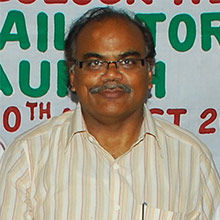Relations between Central government and State governments are always tenuous when it comes to economic parameters, especially allocations, taxes, and fund releases. However, politics and political loyalty do significantly influence the decisions on grants. If the same political party is in power at the national level and State level, it is considered as advantageous, as the State governments can get grants as and when they want. Similarly, if the party in power at the State government is in alliance with the party in power at the national level, and vice versa, is also considered as beneficial. In fact, voters do exercise their vote in anticipation of such favourable situations. Psephologists do consider this as an influencing factor on voting behaviour.
But there seems to be an exception, when one looks at the handloom sector and release of grants to various States by the Ministry of Textiles. While State governments have the overall responsibility for the growth of handloom sector, most of the funds do come from the central budget. However, the allocated funds are not being released properly. Released funds are not utilized to the fullest extent.
The Parliamentary Standing Committee on Labour, in 2004, commented as follows: "The Committee is concerned to note that the actual Plan expenditure has constantly been less than the budgetary estimates since 1993-1994. During 2003-2004, the unspent balance surrendered under Plan allocation was to the tune of Rs.104.41 crore and Rs.64.62 crore under the non-Plan scheme in respect of Design Development and Training Programme, Apparel Export Textiles Parks and various other schemes of the Ministry. The reasons for surrender in most of the cases have been indicated as inaction on the part of the implementing agencies. The Committee feels that continuous unspent balances left with the Ministry year after year clearly indicate a serious flaw in the budgetary process resulting in unrealistic budgetary projections by the Ministry in each subsequent year ignoring the vital outputs of actual requirement of funds under different heads.
The Committee further notes that the Ministry is blaming the implementing agencies and the NGOs for non-availment of second installments of earmarked funds. The reasons given by the Ministry for the unspent balance viz. late receipt or incomplete nature of proposals and delay in release of State share-are of routine nature. In the opinion of the Committee, the monitoring mechanism of the Ministry is not up to the mark. The Committee, therefore, recommended that the Ministry should intensify its monitoring work and take corrective measures such as creating awareness of the schemes by holding periodical review meetings with the State Governments/users also sensitizing the NGOs in a systematic manner so that the funds earmarked are fully utilised. The Committee trusts that the budgetary allocations under different heads will be fully utilized by the Ministry at least during 2004-2005."
Despite this hope, the Ministry of Textiles did not gear up its act, as one can see the latest releases for the handloom sector. While the Ministry of Textiles alone may not be responsible, the respective State governments, officials, and the whole bureaucratic structure has developed a culture of neglect towards the handloom sector, and weavers. Comparatively, one can see how the same Ministry and the same hierarchy responding to the needs of the powerloom and mill sector.
As State-wise releases show, the blame is also on State governments. This neglect pervades all governments, irrespective of the party in power, or their declared love for handloom sector. Seven States did not open their account at all, in 2006-07. West Bengal, upto October, 2006, did not have any releases. The best State seems to be Tamilnadu, which is consistently able to get highest releases. But one also needs to keep in mind, powerloom industry in Tamilnadu is dependent on handloom industry. One is not sure where all the funds are going. Interestingly, within a month, between October and November, 2006, Tamilnadu got Rs.3 crores, about 27 percent. Andhra Pradesh ranks second highest. However, one would be surprised that being Congress-ruled States, it has failed to get more allocations, despite a politically favourable atmosphere at the Central level. Probably, such a result is either linked the lethargy of bureaucrats of AP, or dynamism of bureaucrats in Tamilnadu.
While the total releases across India for 2005-06 totalled Rs.153 crores, in 2006-07, in a period of seven months, the releases total Rs.30 crores - just about 1/5th of the previous releases. If this trend continues, the releases would be far less than committed. However, one cannot rule out sudden jumps in the next four months. If there is a sudden jump, then what is happening with the FRBM (Fiscal Responsibility and Budget Management)?
There is also a lot of inconsistency in releases. States such as Rajasthan and Uttar Pradesh with huge handloom production do not seem to get any releases at all. Who is responsible? Maharashtra gets some funds this year, while there were nil releases last year. Between July and October, 2006, Gujarat gets more than Rs.4 crores. But, for the whole of 2005-06, the releases are mere Rs.56 lakhs. What are these releases for? How are these releases spent? Who are the beneficiaries of these funds? Who is responsible for releases, and for not getting releases?
Total grant release for all the Congress-ruled States is Rs.13.913 crores, which is just Rs.2 crores above Tamilnadu - nine against one. Of this, grants to AP are more than 50 percent. Other 8 States share the remaining. While Congress came to power on the strength of the votes from handloom weavers, its commitment seems to the growth of handloom sector seems to be superficial. But the above statistics should stand them out.
However, when compares the UPA government with the performance of NDA, in relation to handloom sector, there is more positive atmosphere. All the important leaders of the Central government, the Prime Minister, Finance Minister and the President himself, have spoken about the importance of handloom sector for rural livelihoods and Indian economy. Yet, even this atmosphere has not transformed into actual support. Where does the problem lie?
These are some of the questions which need to be delved into. Whatever the situation, handloom weaver is not benefiting, nor had ever benefited from the government funds.
To read more articles on Textile, Fashion, Apparel, Technology, Retail and General please visit www.fibre2fashion.com/industry-article








Comments